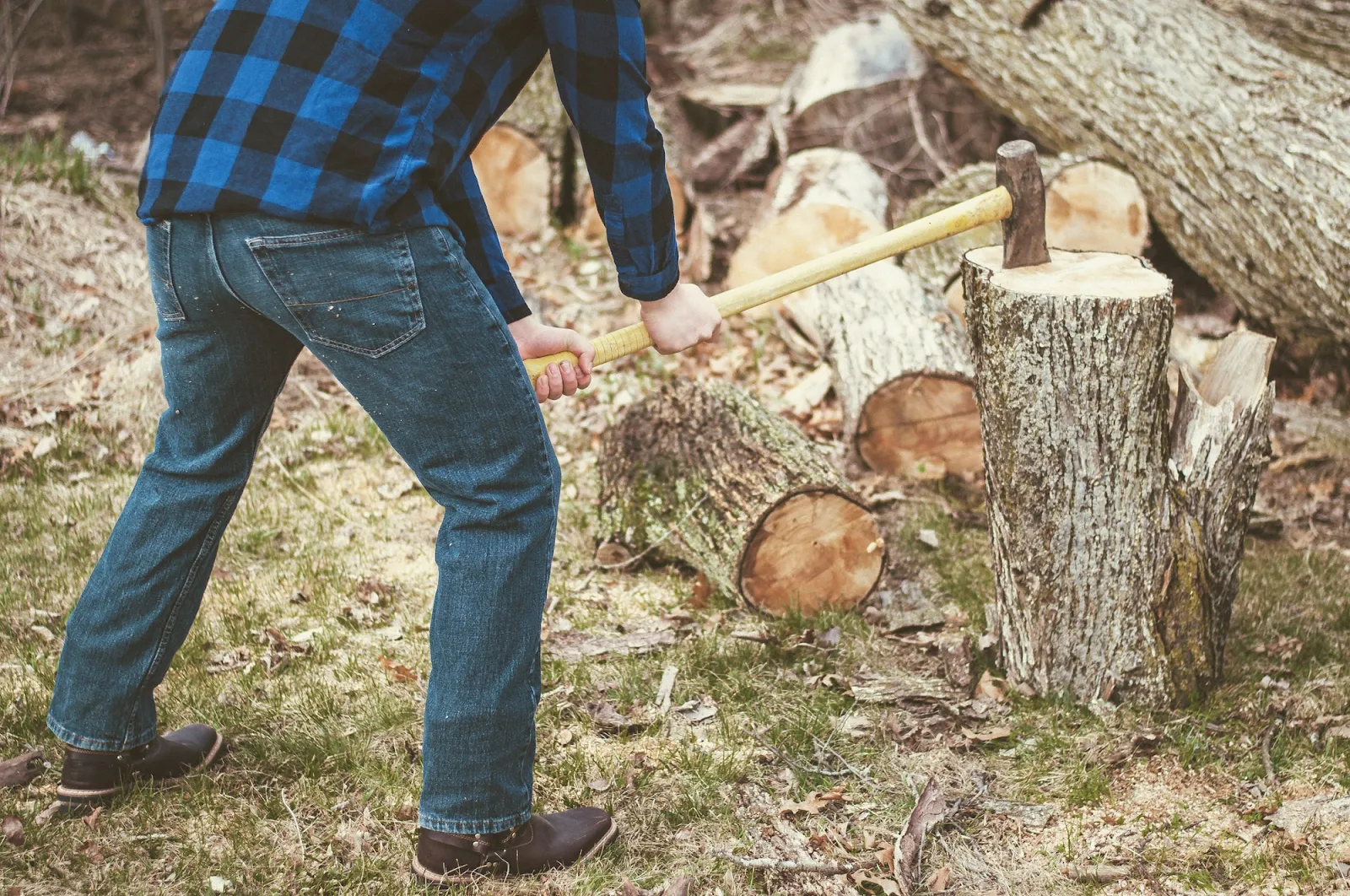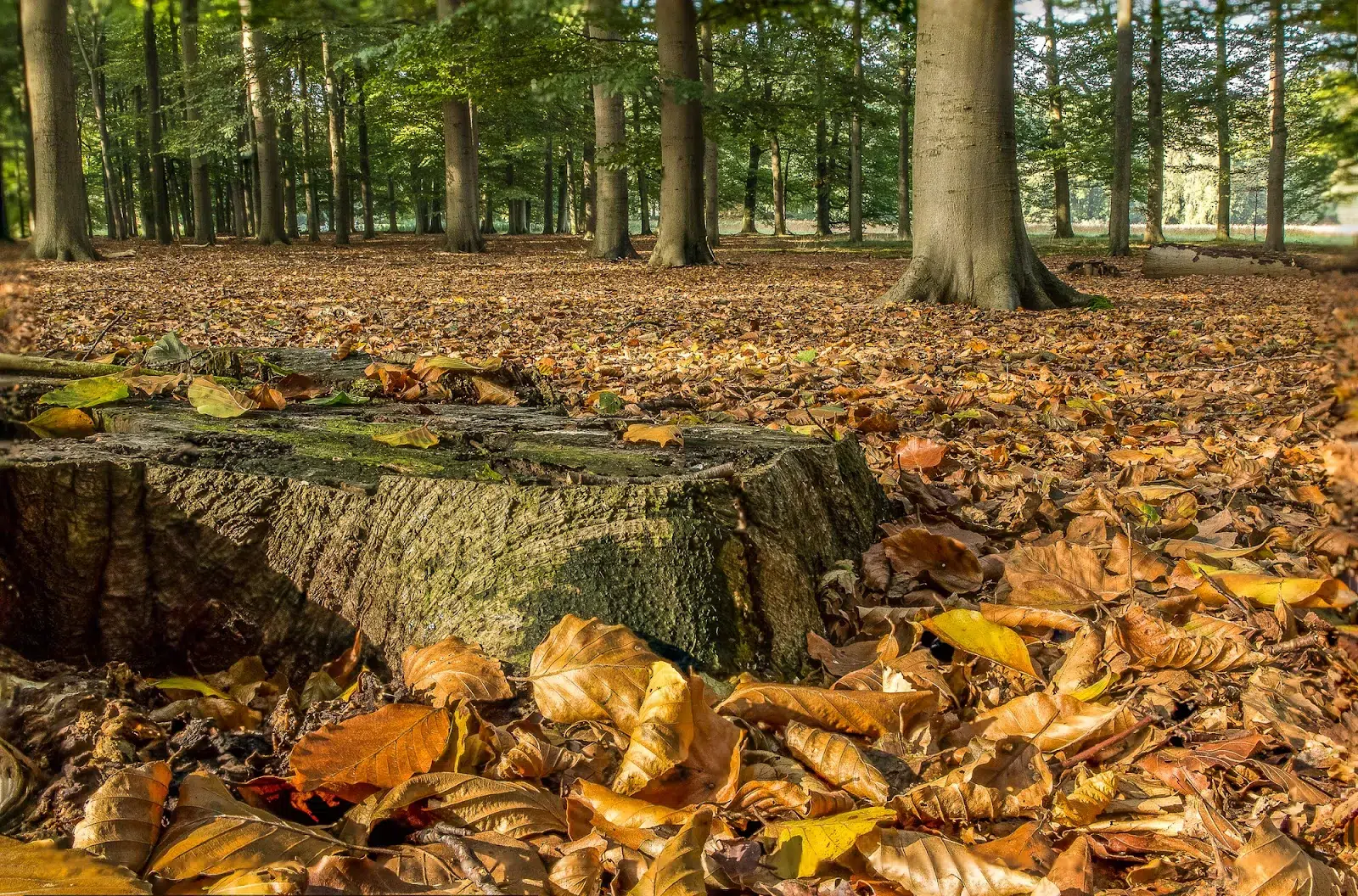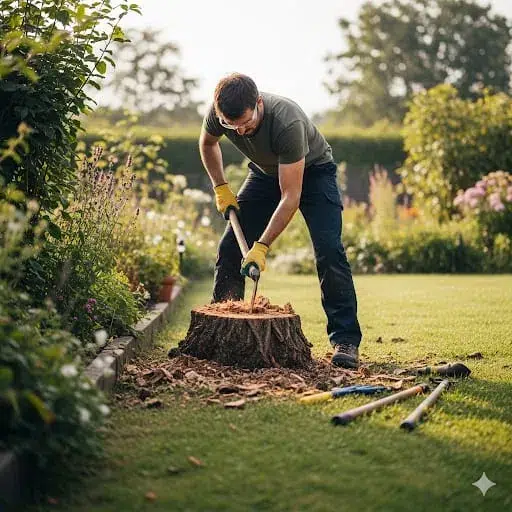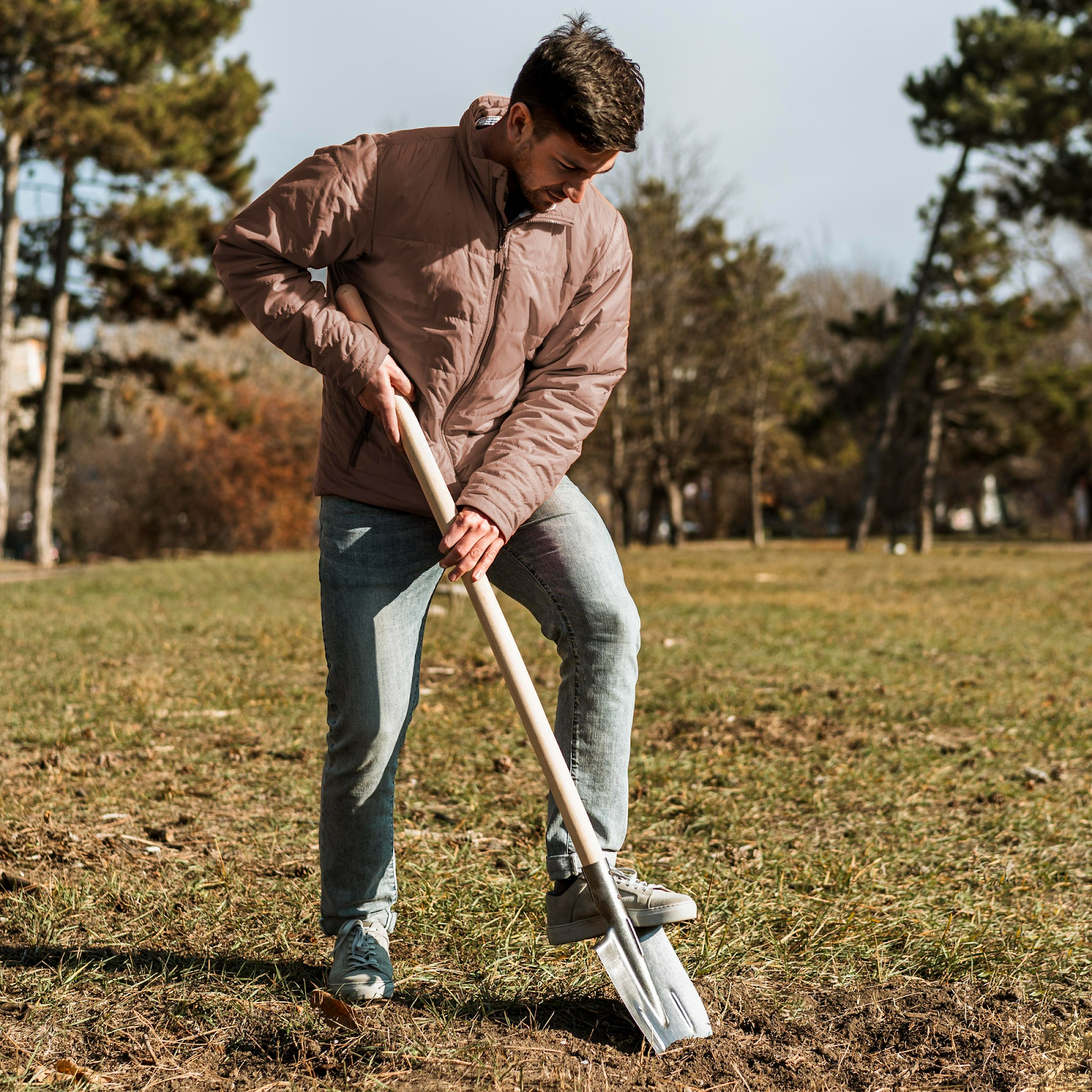Tree stumps left behind after cutting down a tree can be a nuisance, a tripping hazard, or simply unpleasant to look at. So, how can you remove a stump effectively during the cool fall months? Fall is actually the perfect time to do it because the tree’s natural activity slows down, making the stump more vulnerable to treatment.
Let’s look at some practical, safe, and effective ways to get rid of that unwanted stump in your yard.
The Challenge Of Stumps In The Fall

During the fall in Ontario, trees begin to slow their growth and nutrient flow. This slowdown makes the stump less resistant to treatments designed to kill it. At the same time, cooler temperatures and higher humidity can affect how quickly certain methods work.
One of the tricky parts is that the roots may keep pulling nutrients from the soil, keeping the stump alive for months or even years if untreated. That’s why cutting down a tree isn’t enough to solve the problem completely. Understanding how the stump behaves in this season helps you pick the best way to remove it and prevent future growth.
Fall also gives you a unique advantage: the tree’s energy is stored in the roots, which makes chemical treatments more effective. On top of that, the moisture from autumn rains allows chemicals to penetrate deeper, speeding up decomposition. With this knowledge, you can plan stump removal to make the most of the season’s natural conditions.
Effective Methods To Kill A Tree Stump In Ontario In The Fall
A popular and environmentally friendly way to remove the stump left behind when cutting down a tree is to use natural substances, such as Epsom salt or common salt. By drilling holes in the stump and filling them with salt, then covering the stump with a tarp to keep in moisture, you can dry the stump and accelerate its decomposition for several months.
If you’d rather have a faster solution, chemical herbicides designed for stump removal can be applied in the fall. These usually contain glyphosate or triclopyr, which the stump absorbs and carries down to the roots, killing the entire system. Be sure to follow the instructions carefully and apply the herbicide shortly after cutting the stump for the best results.
Another solid option is combining physical removal with treatment. After cutting the stump as close to the ground as possible, using a stump grinder exposes fresh wood. That new surface can then be treated with herbicides or natural salts to prevent regrowth. While this approach takes more work and equipment, it delivers faster results and clears space for new landscaping.
Tips For Safe And Successful Stump Removal In The Fall

Safety should always come first when cutting a tree and dealing with stump removal. If you use chemical herbicides, be sure to wear gloves and goggles, and keep pets and children away from the treated area. Always read and follow product safety instructions to avoid hazards. For natural methods, keep the area well ventilated and be careful not to use too much salt, which can damage nearby plants.
Timing matters a lot in the fall. The best moment to apply treatments is early in the season, right after the leaves begin to change color. At that stage, the stump is still sending nutrients to the roots, allowing chemicals or salts to be absorbed more effectively. Waiting until the tree is fully dormant can reduce the effectiveness of your efforts.
Finally, patience is essential. Removing a stump isn’t instant. Depending on the method chosen and the size of the stump, it may take several months—or even up to a year—for it to die or decompose completely. Keep checking for signs of new growth and reapply treatment if you need to. With steady care and persistence, you’ll soon have a clean, stump-free yard, ready for your next outdoor project.






